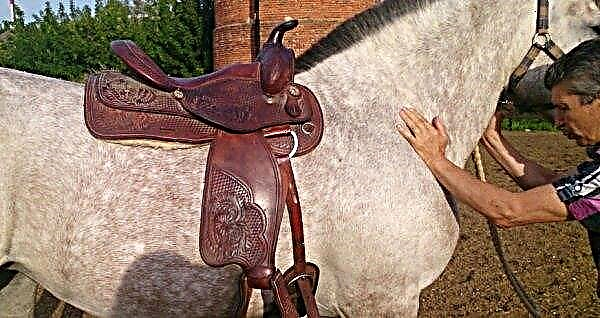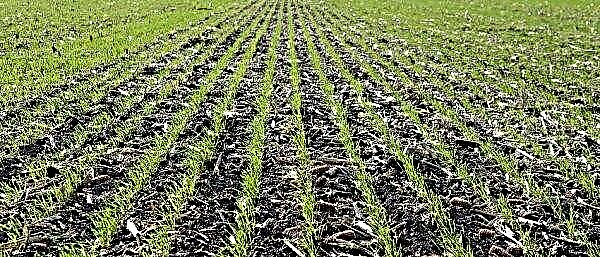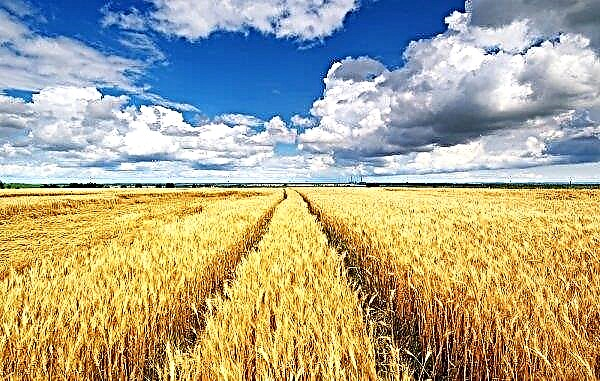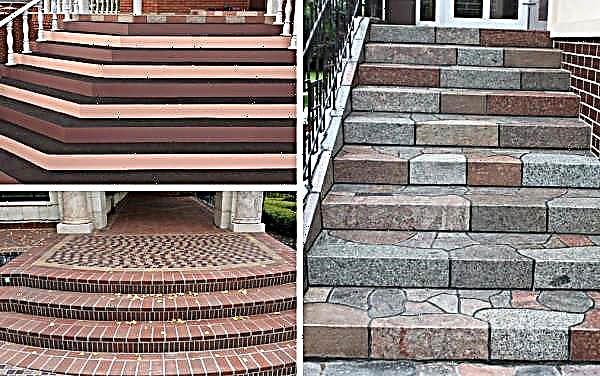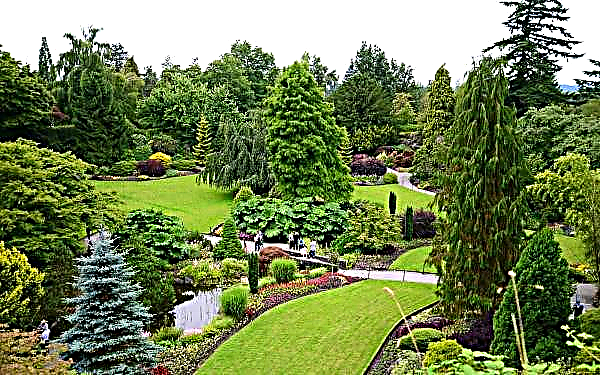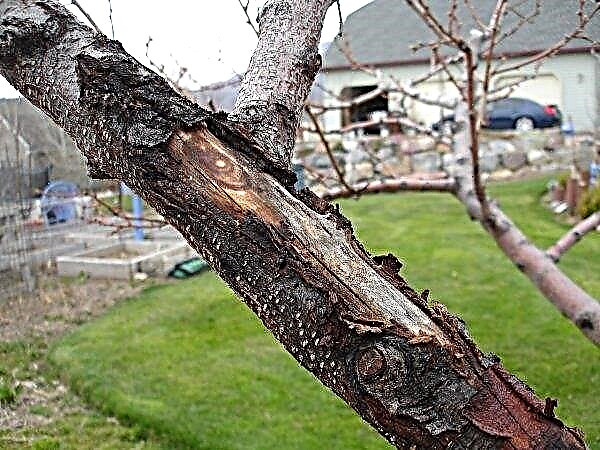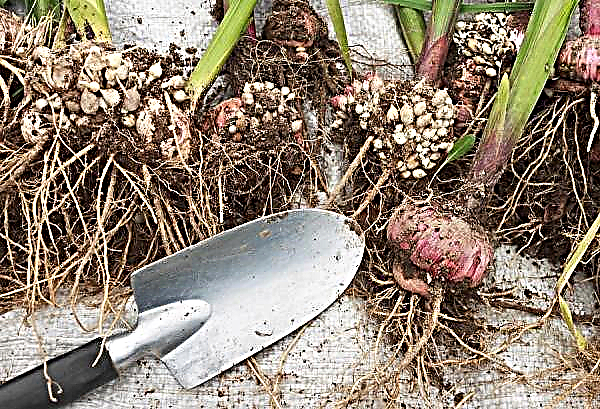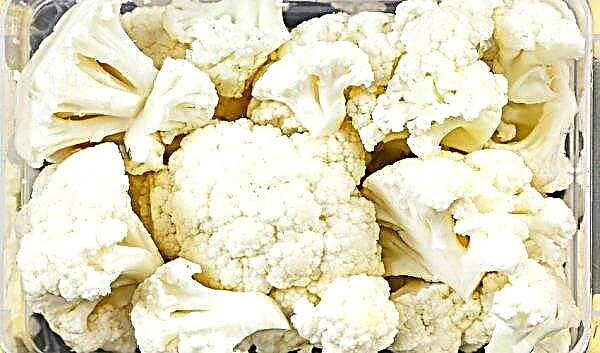Cabbage is rich in vitamins and minerals, so it is important to include this vegetable in your diet. In this article, we will talk about the Centurion variety, its characteristics and cultivation features.
The main regions of cultivation
A hybrid of French breeding, which since 2010 has already gained wide popularity among gardeners. Initially, Centurion cabbage was zoned in the North Caucasus region, but today it is actively cultivated throughout Russia and Ukraine.
Characteristic and Description
The variety is distinguished by good quality forks, as well as high productive indicators.
Did you know? Cabbage juice has antiseptic and anti-inflammatory properties, so it is drunk with cough and colds.
Appearance
The rhizome of the vegetable is well developed. Cabbage is round, with a flat surface. The top sheets are bright green. They are covered with a waxy coating and slightly wavy at the edges. The leaf outlet is slightly raised, which prevents the cabbage from decaying in conditions of high soil moisture, as well as the defeat of the vegetable by slugs. The average weight of the fetus is at the level of 3-3.5 kg. The head is tight. The poker is quite short, but wide. This significantly reduces the amount of waste during cooking cabbage dishes.
Productivity and fruiting
A variety of medium-late ripening. The growth period is 100-115 days, technical ripeness occurs in July. Productivity is quite high - 15-22 kg / m². Forks mature at the same time and have almost the same weight. The output of marketable products is 88%.
Field of application of the variety
The variety is used for cultivation both in small summer cottages and on an industrial scale. Centurion cabbage is famous for its good taste - it is crispy, juicy, sweet, almost without bitterness. It is used for cooking first and second courses, salads, and is also suitable for pickling and salting.

Resistance to diseases and pests
Resistance to diseases is average. The variety is not affected by pathogens of Fusarium, has immunity against parasites, thrips.
Advantages and disadvantages of the variety
- Cabbage Centurion has a number of positive aspects:
- Commercial quality. Heads are dense and compact, there is no empty space at the base.
- Universality of use. The vegetable is suitable for use both in fresh and in heat-treated form, and is also used for various types of workpieces.
- Ripe heads of cabbage do not crack.
- It is well stored and transported. Shelf life - more than 6 months.
As for the shortcomings, the seeds of this variety are quite expensive.
Agrotechnics growing cabbage
As you know, the number of seedlings and the degree of rooting of seedlings directly depends on how the planting material is planted.
Planting seedlings
Seeds for seedlings are sown in late March. To do this, you can use both one large container and individual containers. Before planting, the seeds must be processed by 10 minutes exposure in a weak solution of potassium permanganate. Then, the seed is placed for 12 hours in a lignohumate solution, after which it is washed with warm water.
 Presowing preparation is not carried out if planting material is produced in the form of granules with a special nutrient coating
Presowing preparation is not carried out if planting material is produced in the form of granules with a special nutrient coating
To prepare the soil mixture, it is necessary to mix the turf soil with humus in equal amounts, add ash, (10 tbsp per 10 kg of substrate). Planting containers are treated with boiling water and filled with soil. Abundantly watered. Form grooves with a depth of 1 cm at a distance of 3 cm from each other. Seeds are sown with an interval of 1-1.5 cm and covered with soil.
The temperature is maintained at a level of +18 ... + 20 ° C. After the seeds begin to germinate, the temperature indicator is reduced to +7 ... + 8 ° C. These measures are necessary so that the seedlings do not begin to stretch. Plantations dive - 2 cm² are allocated for each sprout. Two weeks later, the procedure is repeated, increasing the area rate to 3 cm².

Humidification of the soil is carried out as the soil layer dries. In order for the seedlings to develop well, it is important to conduct a course of fertilizing. Fertilizers are applied for the first time a week after the first dive.
For 1 liter of water you need:
- 2 g of potassium monophosphate;
- 2 g of ammonium nitrate;
- 4 g of superphosphate.
1 liter of solution is designed for 50-60 plants. After 2 weeks, the procedure is repeated, while the number of active components is doubled.
A few days before planting, make a nutrient solution, which consists of 1 liter of water, in which it is dissolved:
- 5 g of ammonium nitrate;
- 5 g of superphosphate;
- 8 g of potassium monophosphate.
Important! Nutrient nutrients can cause chemical burns to young plants, therefore, watering is preliminarily carried out.
Planting seedlings in open ground
For subsequent cultivation, a well-lit area with deep-lying underground waters is assigned. Landing is carried out in early May, in cloudy weather or in the afternoon. The site is dug up and holes are formed in a depth of 2 cm, in the calculation - 5 pcs per 1 m². Suitable for planting are 35-40-day-old sprouts with 6 developed leaves.

Further care for cabbage
After transplanting seedlings, it is important to follow all the requirements of agricultural technology of this culture.
Cultivating, harrowing, hilling
After each procedure, irrigation or rain, the soil is loosened to a depth of 5-8 cm. Hilling is carried out 3 weeks after planting and repeated every 10 days - a mound of no more than 30 cm high is formed around a head of cabbage. Harrow the soil immediately before planting.
Did you know? The use of cabbage stimulates the fermentation of gastric juice, thereby positively affecting the metabolic processes in the body.
Feeding and watering
The first 2 weeks after planting, spend abundant watering every 2-3 days. About 7 liters of water are consumed per square meter. Further, the amount of irrigation is reduced to 1 time per week. The procedure is carried out in the early morning or evening. Water is used at a temperature of at least + 18 ° C.
The first top dressing is carried out on the 20th day of plant growth in open ground. In 20 l of water, 1 l of mullein is diluted and 500 ml of this solution is made under each plant. The second time plantings are fed in early July, using infusion of wood ash. To prepare it, it is necessary to combine 2 liters of water and 2 glasses of active substance, withstand about 5 days.

Two weeks before harvest, the following components are used:
- 20 l of water;
- 80 g of potassium sulfate.
Pest and Disease Control
To prevent damage to the culture of various kinds of diseases and pests, as mentioned above, preplant seed treatment is carried out.
Next, use, depending on the threat:
- Cabbage flies - Soil cultivation "Bazudin", in the calculation of 10 g per 10 m².

- Fungal Disease - Kila, which is characterized by wilting and dying of leaves in the early stages of growth. As for the rhizome, brown growths form on it. Affected plants are burned, the soil is disinfected with a Bordeaux mixture, and for prevention purposes, colloidal sulfur is added to the soil, calculated at 50 g per 10 m².

- Decay of the lower part of the stem, in other words blackleg. To combat fungus, the soil is treated with hot water and 1% potassium permanganate solution.
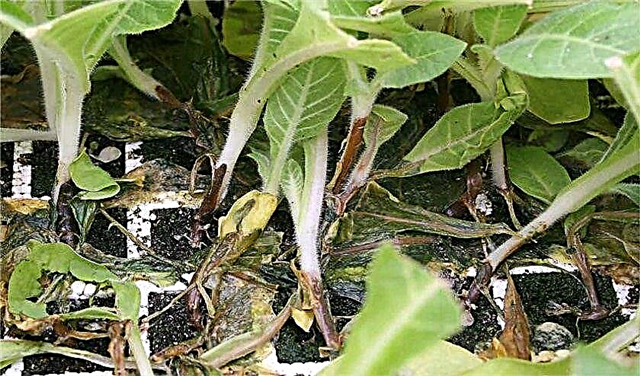
- Mucosal bacteriosis - putrefactive process of the outer leaves and covering them with mucus, which leads to the complete destruction of the head. For the prevention of the disease, seedlings rhizome, before planting in the ground, should be treated with 0.1% solution of "Fitobacteriomycin."
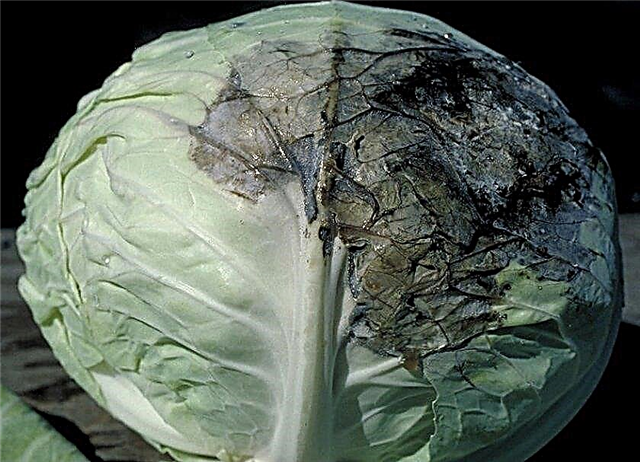
- To combat slugs, at the end of May, in the morning, they spray the soil with 0.5% solution of copper sulfate.

Harvest dates and storage
Harvest in July.
The ripeness of heads of cabbage can be determined by the following criteria:
- density and size of the head;
- stunting of heads of cabbage;
- yellowing of the lower foliage.
Important! To prevent the heads of cabbage from drying out during storage, several pieces of cover sheets are left on them.
Harvest fruits in warm and dry weather. Carefully dig out cabbage with a shovel. Damaged leaves and debris are removed. After that, the vegetables are placed under a canopy to dry them. Next, cut the rhizome and transfer the forks to the storage location.
It is impossible to lay cabbage on the floor, therefore it is necessary to build shelves, or to lay the straw, which changes as it gets wet. Heads are laid in one layer so that they do not touch each other. Centurion cabbage is stored for up to 6 months at a temperature of +1 ... + 2 ° C and a humidity of 90-98%.
 Cabbage Centurion is a medium-late variety with crisp, juicy leaves and a sweet taste. Ideal for preparing any dishes, including salads and pickles. It is well transported and has an attractive presentation. The above is a detailed technology for growing this variety, thanks to which, everyone can cultivate Centurion cabbage on their site.
Cabbage Centurion is a medium-late variety with crisp, juicy leaves and a sweet taste. Ideal for preparing any dishes, including salads and pickles. It is well transported and has an attractive presentation. The above is a detailed technology for growing this variety, thanks to which, everyone can cultivate Centurion cabbage on their site.






